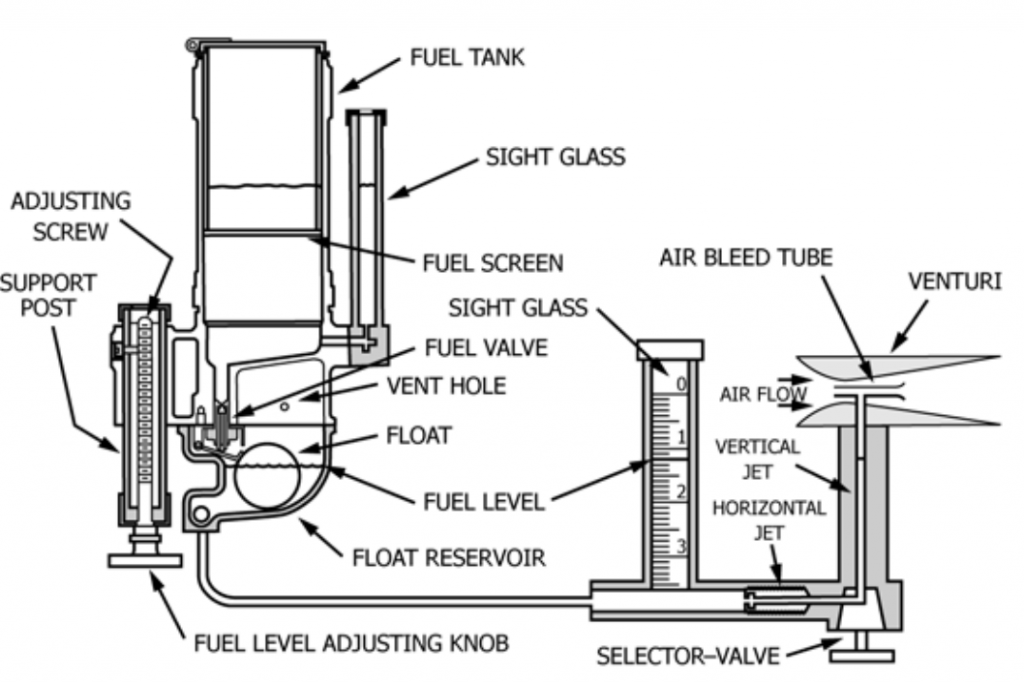With the octane test engine operating at a cylinder height that causes knock, variation of the fuel-air mixture has a characteristic effect, typical for all fuels.
The ASTM D2699 RON/ASTM D2700 MON test method specifies that each sample fuel and PRF shall be operated at the mixture condition that produces the maximum knock intensity. The peaking or maximizing knock characteristic is illustrated in below figure.

The octane test engine carburetor, utilizing a single vertical jet, provides a simple means to monitor a measure of fuel-air ratio using a sight glass that indicates the fuel level in the vertical jet.
Low fuel levels relate to lean mixtures and higher levels to rich mixtures. Fuel level changes are made to determine the level that produces the maximum knocking condition. To maintain good fuel vaporization, a restrictive orifice or horizontal jet is utilized so that the maximum knock condition occurs for fuel levels between 0.7 in. and 1.7 in. referenced to the centerline of the carburetor venturi. The mechanics for varying the fuel mixture can be accomplished using various approaches.

Note:
1) Air flow through venturi is constant.
2) Raising fuel level richens F/A mixture.
3) Fuel level for maximum K.I. depends on horizontal jet size and fuel level.
4) Fuel level for maximum K.I. must be between 0.7 and 1.7.
5) Larger hole size in horizontal jet will lower maximum K.I. fuel level.
